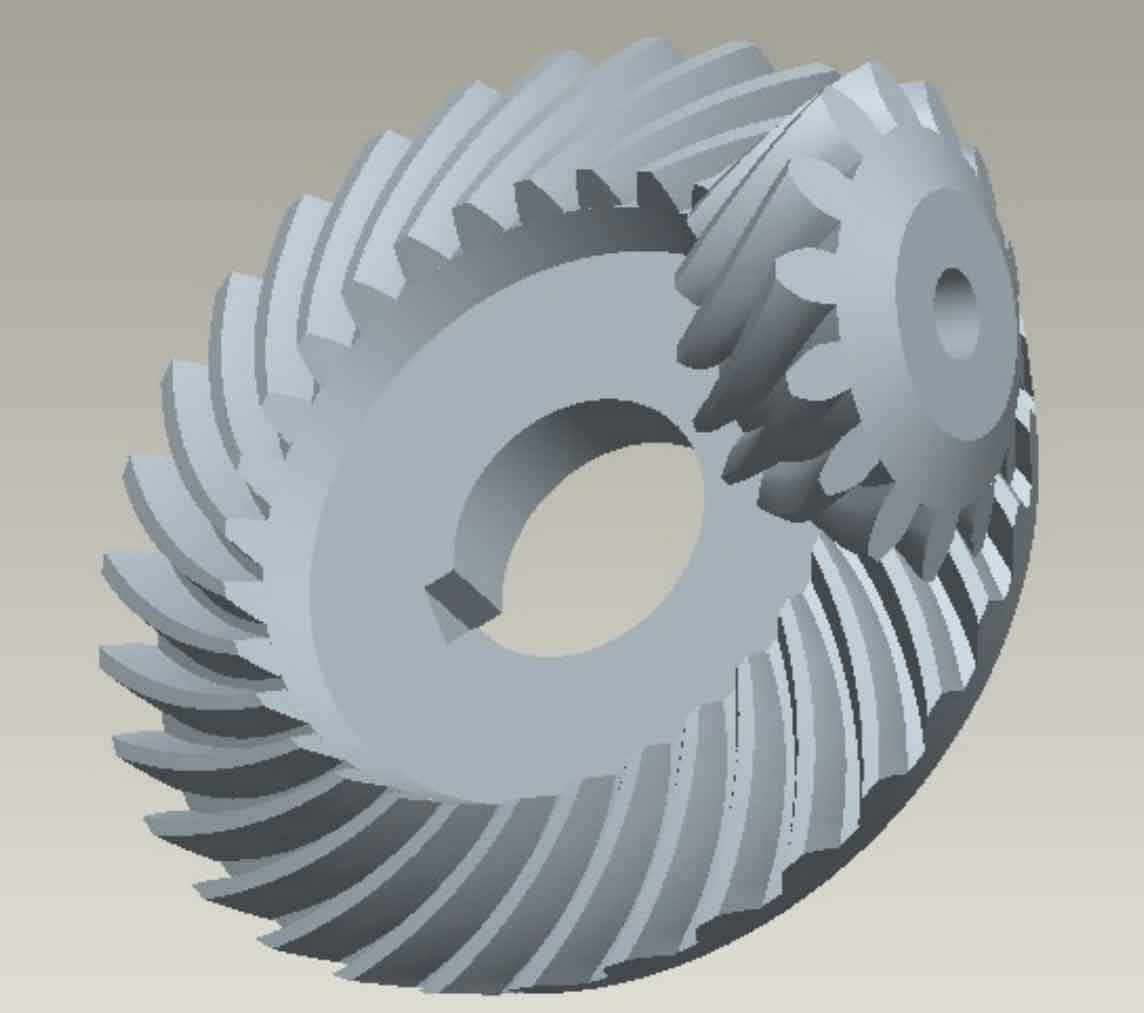
For cycloid hypoid gears, based on the accurate modeling of the tooth surface, the tooth geometric contact analysis, loading contact analysis, stress process analysis, time-varying meshing stiffness calculation of the gear pair, tooth surface error sensitivity analysis, tooth surface error pre correction, tooth surface active design, actual tooth surface meshing simulation analysis and active design are studied, A complete set of cycloid hypoid gear meshing performance analysis and tooth surface active design software system is formed, including three modules: tooth surface meshing performance analysis, tooth surface active design, and tooth surface meshing performance analysis and active design based on the actual tooth surface.
(1) Considering the blade arc and the tip arc, a general complete tooth surface model including the working tooth surface and the tooth root transition surface is established. The calculation example shows that the theoretical tooth surface obtained by the modeling method is 0.676 compared with the theoretical tooth surface calculated by kimos5 software μ M and 0.511 μ m. The sum of square errors of each grid point is 36.739 respectively μ M2 and 24.944 μ m2。 A new instantaneous contact ellipse calculation method is proposed, which can obtain the complete contact ellipse boundary. The mathematical model of geometric contact analysis of cycloid hypoid gear is modified. The calculation example shows that the TCA method is compared with the TCA results of kimos5 software, the direction of meshing impression and instantaneous contact ellipse are basically the same, and the difference of meshing conversion point amplitude of geometric transmission error of working face is 1.71%, and that of non working face is 1.97%. The geometric analysis method of edge contact of cycloid hypoid gear is given, and the edge contact analysis of a gear pair is carried out. The load-bearing contact analysis model of cycloid hypoid gear teeth is established. On this basis, the process of contact stress and bending stress is analyzed, and a new calculation method of time-varying meshing stiffness of gear pair is proposed.
(2) Using the established tooth surface model, the influence law of various machining parameters, including tool parameters, cutter head parameters, machine tool setting parameters and hobbing ratio correction motion parameters, on the tooth surface topology is analyzed by quantitatively applying disturbance. The optimization model of tooth surface error pre correction of cycloid hypoid gear is established, and the SQP algorithm is used to solve the model to obtain the adjustment of processing parameters.
(3) Taking the theoretical tooth surface of the large wheel as the hypothetical production wheel, according to the preset transmission error function, the auxiliary tooth surface of the small wheel is developed into a small wheel that contacts with the line and meets the preset transmission error curve. The auxiliary tooth surface of the small wheel is modified along the meshing line direction of each meshing position according to the curve determined by the preset contact mark, and finally the target tooth surface of the small wheel that meets the preset meshing performance is obtained. An optimization model is established to minimize the square sum of the normal errors between the small gear tooth surface and the target tooth surface. The weight coefficient is introduced into the model to ensure the approximation degree of the tooth surfaces on both sides machined by the double-sided method. SQP algorithm is used to solve the problem, and the adjustment amount of small wheel machining parameters is obtained. By changing the weight coefficient, the meshing performance of one side of the tooth surface can be selectively guaranteed. The machining parameters of the theoretical tooth surface of the big wheel and the target tooth surface of the small wheel are imported into Klinger kimos5 software for TCA. It is found that the position of the meshing mark and the direction of the instantaneous contact ellipse are basically consistent with the preset conditions, the geometric transmission error of the working face, the difference between the amplitude of the meshing conversion point and the preset value is 2.42%, and the difference between the non working face is 1.95%.
(4) Based on the fitting of discrete coordinate points of the tooth surface measured by the high-precision gear measurement center, the NURBS fitting tooth surface and tooth surface equation of the actual tooth surface are obtained, that is, the digital tooth surface. Through NURBS fitting of discrete points at the same position of the theoretical tooth surface, it is found that the fitting error is only 0.1 μ m. Therefore, the fitting has high accuracy. The simulation analysis method of actual tooth surface meshing of cycloid hypoid gear is established. The simulation mark results are basically consistent with the roll inspection test results, and the transmission error curve can be obtained while obtaining the tooth surface contact mark, which comprehensively reflects the meshing information of the actual tooth surface, and avoids the problem that the inspection and evaluation benchmark may be inconsistent when the theoretical tooth surface is used for simulation analysis and the actual tooth surface is used for roll inspection; On this basis, an active design method of cycloid hypoid gear tooth surface based on the actual tooth surface is proposed. This method comprehensively considers the deviation of large and small gear tooth surface caused by machining error and heat treatment deformation, and the expected meshing performance can be obtained only by modifying the small gear tooth surface once.
(5) Taking a high-speed axle gear pair of spirac method as an example, the tooth cutting, tooth surface measurement, roll inspection test, theoretical tooth surface modeling, geometric contact analysis and active design verification are carried out. The results obtained by the simulation method are compared with the test results and the simulation results of kimos5 software. The tooth surface modeling method, theoretical tooth surface TCA method, tooth surface active design method are verified The validity and feasibility of the simulation analysis method of actual tooth surface meshing.
